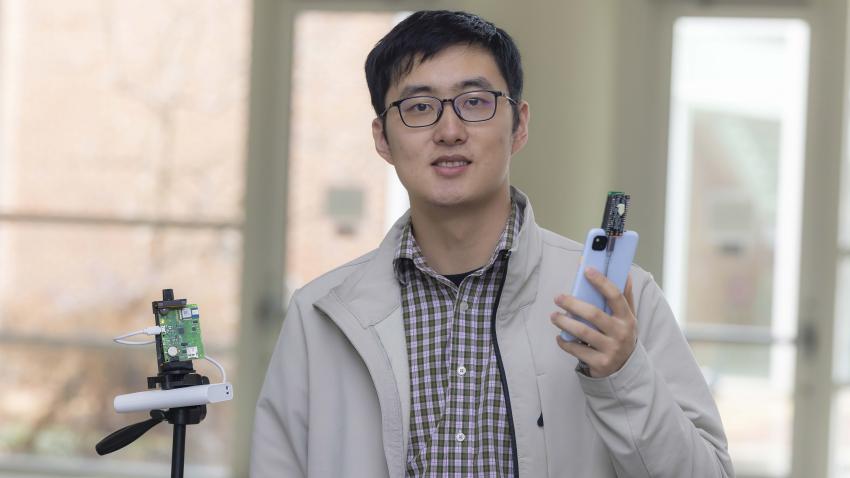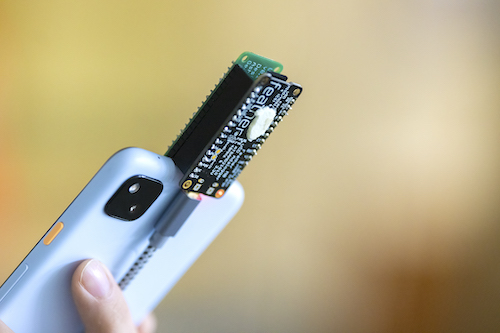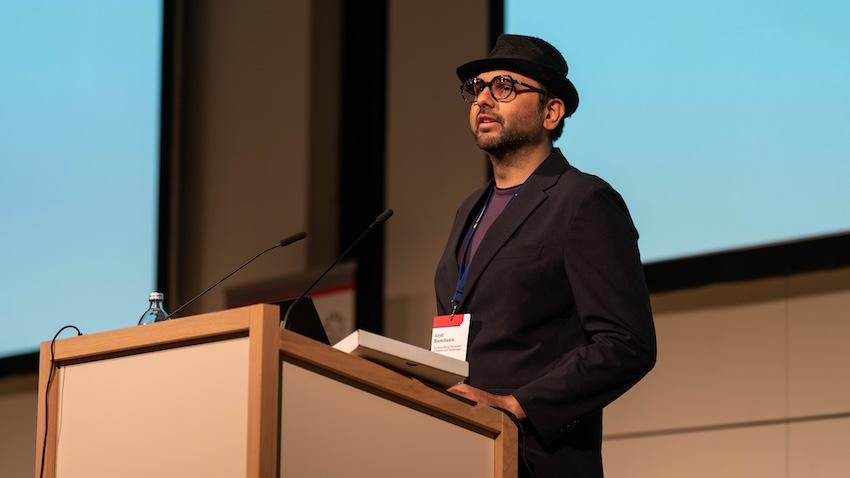
New Research Explores Indoor Navigation
A new technology tests the use of ultra-wide band (UWB) radio technology for indoor navigation, providing a simple way to navigate indoor spaces.
Georgia Tech School of Computer Science Assistant Professor Ashutosh Dhekne and student Haige Chen presented their paper, PnPLoc: UWB Based Plug & Play Indoor Localization, at IPIN (Indoor Positioning and Indoor Navigation) 2022 in September 2022, where it won the best paper award.
The paper focuses on the use of UWB to map and help people navigate indoor settings. Chen and Dhekne developed a system and prototype, PnPLoc, that they tested inside various indoor spaces.

PnPLoc includes two key elements: UWB “anchor” devices placed throughout a building and a “passive wireless listener” that connects to a user’s cellphone. The two devices communicate wirelessly with each other, allowing the user to know their location inside the building.
Dhekne said the UWB technology functions similarly to GPS, but unlike GPS, which does not work well indoors due to walls and other obstacles blocking the signal, UWB signals are capable of better indoor coverage.
“If you’re looking for a specific room in a large building on campus, currently GPS won’t help you,” Dhekne said. “Having a system like this in a building allows you to navigate from the building’s entrance to your indoor destination.”
Like GPS, Dhekne said PnPLoc is also inherently privacy preserving. Other benefits of the system are that it is highly scalable and easy to install for building managers and easy to use for the end users. To accomplish this, the team made the “anchor” devices able to plug in to a wall socket anywhere, and a guidance system for building managers to decide the next anchor location for good coverage.
“This paper solves two important challenges in indoor localization that have been around for a long time: having both a privacy preserving and scalable solution,” Dhekne said.
Along with helping people navigate indoor spaces, both researchers say that the technology has several potential applications, such as facility management, meetups, location-based reminders, etc. While the underlying technology is privacy preserving, and appropriate permissions would be needed, an application using the technology could share a user’s location within a structure to building managers. This would allow building managers to use the data to improve user experience and efficiency in the indoor space. It could also help locate people within a building during an emergency.
“One of the motivations of this paper was to make the leap from indoor localization as a research field to making it a tool commonly used by everyone,” Chen said. “I think that’s one of our main achievements here.”
The fundamental technology developed in this project is already becoming the foundation for several related projects under Dhekne’s mentorship, including a demo and a poster presented at UbiComp 2022, a demo at MobiSys 2022, and an upcoming demo at HotMobile 2023.
This work is supported by Dhekne’s NSF CAREER award, which he earned in 2022, and by Cisco.


